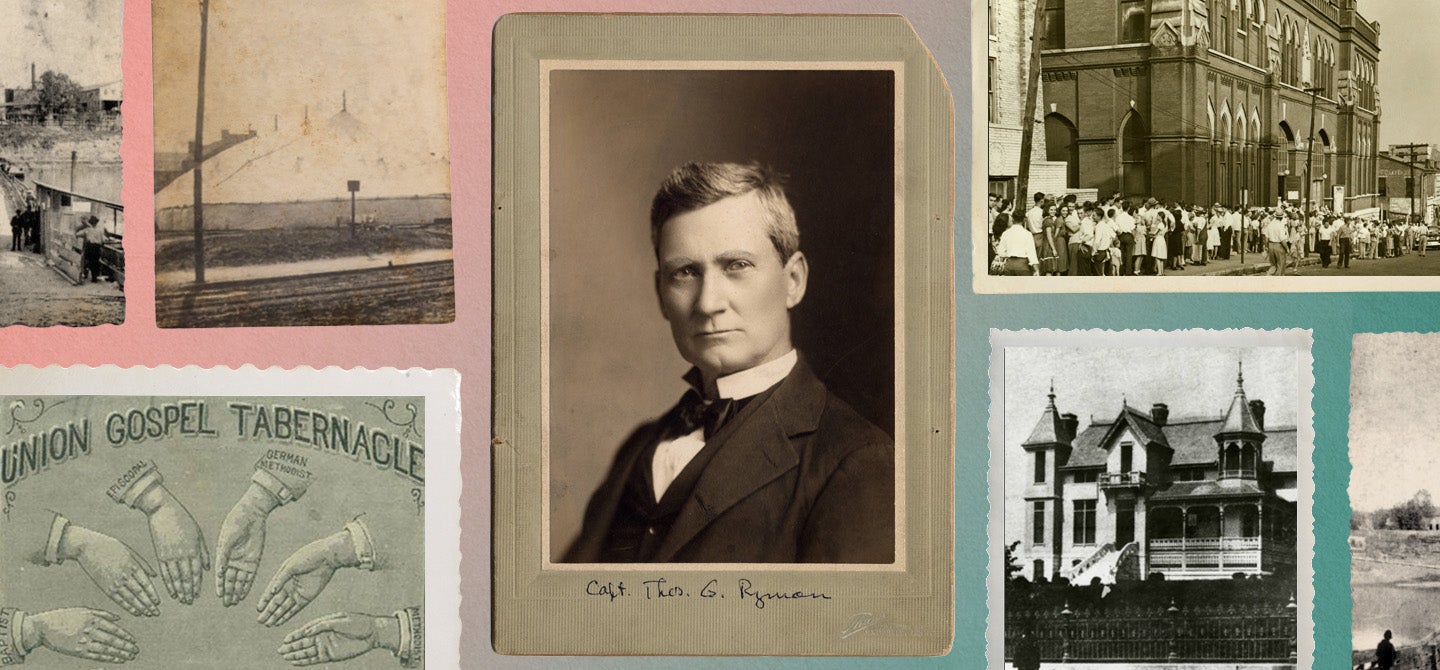
Captain Tom Ryman: Captain. Skeptic. Convert.
HOW A DOUBTER BUILT A CHURCH THAT CHANGED THE FACE OF MUSIC FOREVER.
On the night of May 10, 1885, Riverboat Captain Thomas Green Ryman arrived at a downtown Nashville religious revival to see what all the fuss was about. He left town that evening called by God to build a big, beautiful church.
At the time, Ryman was a prominent 44-year-old Nashville businessman and the owner of a major riverboat company. He started the business with his father and quickly took over management of the venture at 15, fishing the Tennessee River near Chattanooga during the Civil War to support his mother and four siblings after his father died. Over time, Ryman amassed a 35-ship fleet as well as various saloons and side businesses catering to rowdy river life. Ryman directly profited from the alcohol, gambling, and unsavory behavior that the popular Reverend Sam Jones was set to rail against on that hot revival night in May, and he arrived with a few friends to see just what the good reverend had to say about the situation.
What happened next was nothing short of a miracle. Reverend Jones was famous for his tent revivals, and this one drew a crowd of thousands to Spruce and Broad (8th Ave and Broadway). Though Ryman arrived as a curious spectator, the Reverend’s sermon and the energy of the faithful crowd stirred something deep and surprising inside him. He pledged then and there to use his wealth and influence to construct a building large enough to hold every person who wanted to hear Sam Jones and others preach. He wanted to ensure that the good citizens of Nashville would have a proper place to worship together and that they would never have to attend a revival under a tent again.
Seven years and approximately $100,000 later, in 1892, Reverend Jones stood behind the pulpit of Ryman’s brand-new Union Gospel Tabernacle to preach. He declared, “I believe for every dollar spent in this Tabernacle, there’ll be $10 less spent in the future on court trials. This tabernacle is the best investment the city of Nashville ever made.”
When he died in 1904, Ryman was widely regarded as an exceptional businessman and a pillar of faith, generosity and kindness in the Nashville community. At Ryman’s funeral on Christmas Day, Sam Jones proposed to the 5,000 mourners in attendance that the building be re-named in the Captain’s honor; from that day forward, the Union Gospel Tabernacle was known as Ryman Auditorium. Today, a copper statue of the Captain stands on Ryman Plaza near the auditorium’s entrance, facing east toward the river that fueled the fortune behind what would become affectionately known as the Mother Church of Country Music.
Learn more of our history.
Follow the Ryman’s story from the very beginning. Tour the Ryman today.





